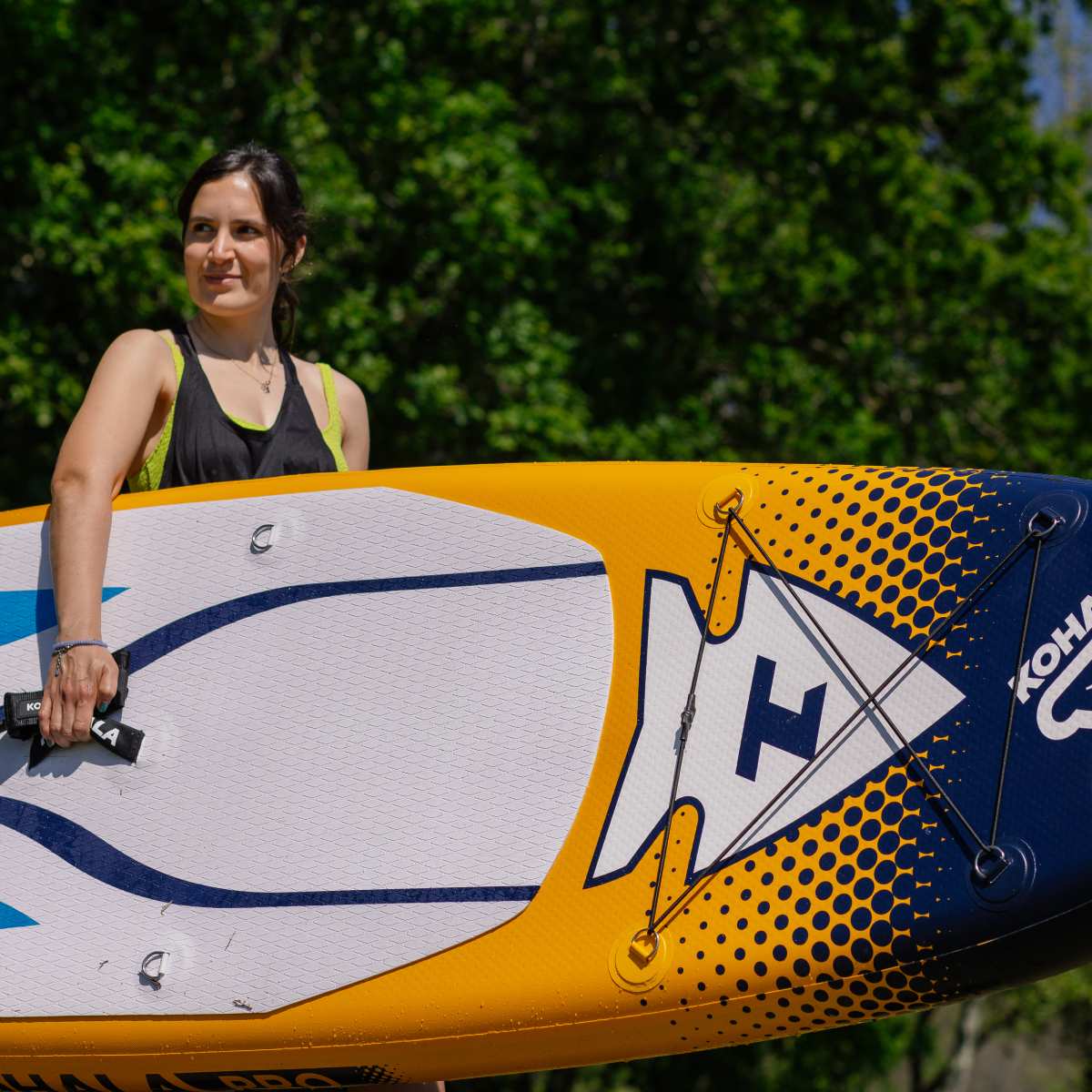
Paddle boarding in rivers can be a fun and exciting way to enjoy the outdoors and get some exercise. However, it’s important to take certain precautions and be aware of the unique challenges that come with river paddle boarding. In this article, we will discuss some precautions and tips to keep in mind when paddle boarding in rivers.
Check the River Conditions
Before heading out to paddleboard in a river, it’s important to check the river conditions. Pay attention to the water level and flow rate, as well as any hazards like rocks or rapids.
Choose a river with a gentle flow and low water level for your first few paddle boarding sessions. As you gain experience, you can gradually increase the difficulty of your paddle boarding adventures.
Wear a Leash and Personal Flotation Device (PFD)
Wearing a leash and PFD is crucial when paddle boarding in rivers. A leash will keep you connected to your board and prevent it from drifting away if you fall off. A PFD will help keep you afloat in case of an accident.
Choose a leash that is long enough to allow you to move around on the board, but not so long that it creates a tripping hazard. A coiled leash is a good option, as it won’t drag in the water and create excess drag.
Make sure your PFD is designed for river use and fits properly. It should be snug but not tight, and allow you to move freely.
Practice Safety Precautions
Safety should always be a top priority when paddle boarding in rivers. Here are some safety precautions to keep in mind:
Avoid paddling alone, and let someone know where you’ll be paddle boarding and when you plan to return.
Wear appropriate clothing and footwear. A wetsuit or drysuit can provide protection from cold water and strong currents.
Bring a whistle or horn to signal for help in case of an emergency.
Avoid paddling near dams or other structures that can create dangerous currents and eddies.
Be aware of your surroundings and keep an eye out for other watercraft, wildlife, and hazards like rocks and debris.
Learn How to Navigate Through Rapids
Navigating through rapids can be one of the most challenging aspects of river paddle boarding. Here are some tips to help you navigate through rapids:
Approach rapids at a slight angle to reduce the impact of the current on your board.
Keep your weight centered and your knees bent to maintain balance.
Use your paddle to brace against the current and stabilize your board.
Look for “channels” or areas of calm water between rapids to navigate through.
If you fall off, make sure to grab your board and leash and try to swim to shore or a safe area.
Be Aware of Hazards
Rivers can contain a variety of hazards, including rocks, debris, and underwater obstacles. It’s important to be aware of these hazards and take precautions to avoid them.
Avoid paddling near shorelines and areas with shallow water, as rocks and debris can be hidden beneath the surface. If you do encounter a hazard, try to steer clear or paddle around it if possible.
Practice Proper Etiquette
When paddle boarding in rivers, it’s important to practice proper etiquette. Here are some guidelines to follow:
Yield to other watercraft, including boats, kayaks, and canoes.
Respect wildlife and avoid disturbing their natural behavior.
Don’t litter or leave trash on the riverbank or in the water.
Follow all posted rules and regulations for the river.
Conclusion
Paddle boarding in rivers can be a thrilling and rewarding experience, but it’s important to take precautions and be aware of the unique challenges that come with river paddle boarding. Check the river conditions, wear a leash and PFD, practice safety precautions, learn how to navigate through rapids, be aware of hazards, and practice proper etiquette. With these tips in mind, you can have a safe and enjoyable paddle boarding adventure in the river.

